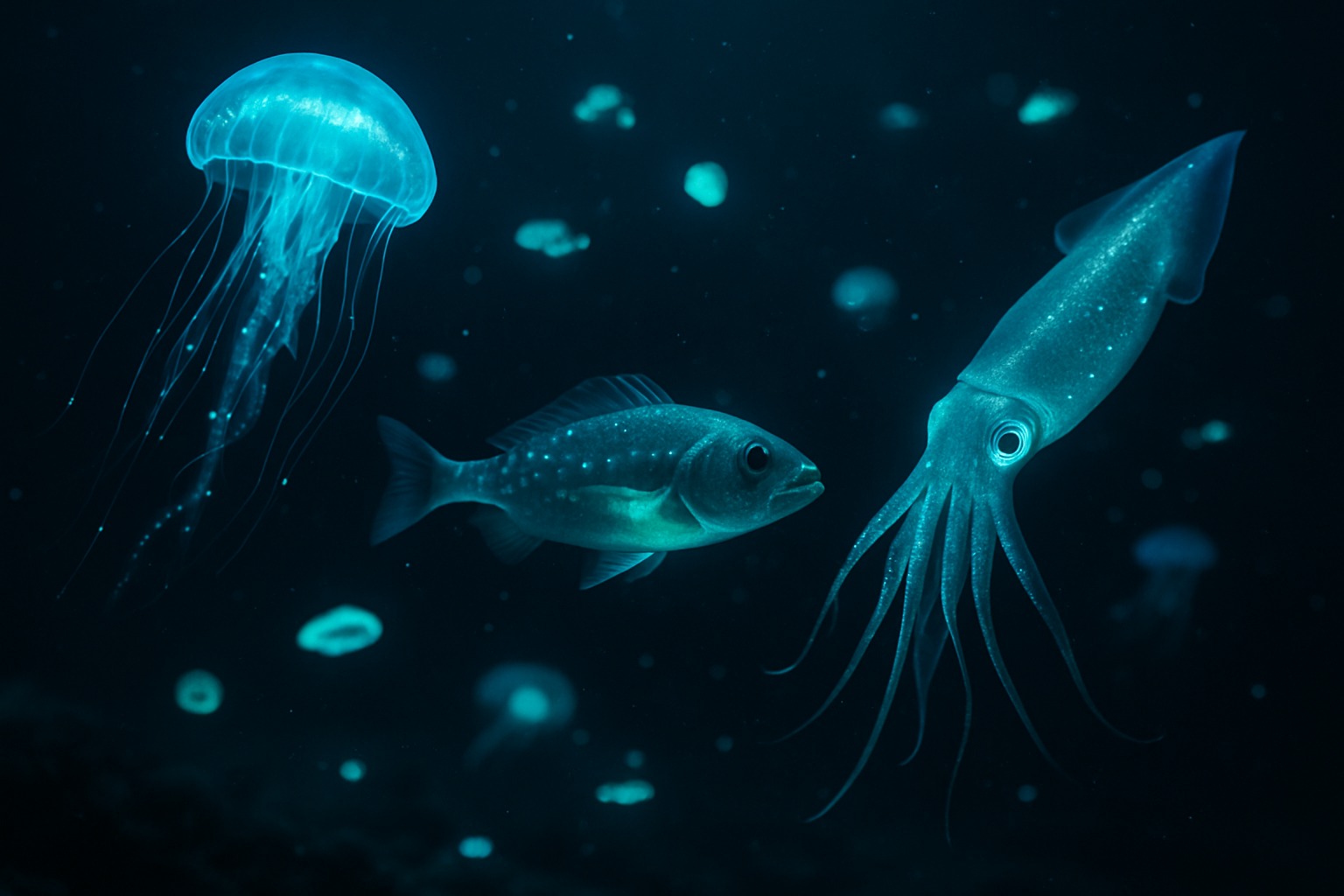The Enigmatic World of Bioluminescent Marine Life
Dive into the mesmerizing depths of our oceans and discover a hidden realm where light dances in the darkness. Bioluminescent marine creatures, nature's living lanterns, illuminate the vast underwater expanse with their ethereal glow. From tiny plankton to deep-sea behemoths, these remarkable organisms have captivated scientists and nature enthusiasts alike for centuries. This article explores the fascinating world of bioluminescent marine life, shedding light on their unique adaptations, ecological significance, and the cutting-edge research that continues to unravel their secrets.

The Science Behind the Glow
At the heart of bioluminescence lies a fascinating chemical reaction. This process involves the interaction between a light-emitting molecule called luciferin and an enzyme known as luciferase. When these two components combine in the presence of oxygen, they produce a stunning display of light. Different species of marine organisms have evolved unique variations of this basic mechanism, resulting in a diverse array of colors and intensities of bioluminescence.
Interestingly, not all bioluminescent organisms produce their own light-emitting chemicals. Some species, such as certain types of squid, form symbiotic relationships with bioluminescent bacteria. These microorganisms reside within specialized light organs in the host’s body, providing a constant source of illumination in exchange for nutrients and protection.
Luminous Strategies for Survival
Bioluminescence serves a multitude of purposes in the marine environment, each adapted to the specific needs of different species. One of the most common uses is for communication. Many deep-sea fish use patterns of light to recognize potential mates or warn off competitors. Some species even employ complex light displays as part of elaborate courtship rituals.
Another crucial function of bioluminescence is camouflage. Counter-intuitive as it may seem, producing light can actually help marine organisms blend into their surroundings. This technique, known as counterillumination, involves emitting light from the underside of the body to match the faint sunlight filtering down from above, effectively erasing the animal’s silhouette and making it invisible to predators below.
Hunters and Hunted: Bioluminescence in Predator-Prey Relationships
In the eternal struggle between predator and prey, bioluminescence plays a pivotal role. Some species use their light-producing abilities to lure unsuspecting victims closer. The anglerfish, with its bioluminescent lure dangling in front of its gaping jaws, is perhaps the most famous example of this strategy. Other predators, like the cookiecutter shark, use bioluminescence to create a shadow that makes them appear smaller to potential prey, only to reveal their true size at the last moment.
On the defensive side, many marine organisms employ bioluminescence as a startling mechanism to confuse or deter predators. The deep-sea shrimp Acanthephyra purpurea, for instance, can expel a cloud of bioluminescent fluid, creating a dazzling display that momentarily blinds its attacker and allows for a quick escape.
From the Microscopic to the Massive
Bioluminescence is not limited to a particular size or type of marine organism. It’s found across a vast spectrum of species, from microscopic dinoflagellates to large squid and fish. Dinoflagellates, tiny single-celled organisms, are responsible for the enchanting phenomenon known as sea sparkle, where waves breaking on the shore create a stunning blue glow.
At the other end of the scale, the colossal squid, one of the largest known invertebrates, possesses bioluminescent organs called photophores. These light-producing structures are thought to help the squid navigate its deep-sea habitat and potentially communicate with others of its kind.
Bioluminescence in Research and Technology
The study of bioluminescent marine life has far-reaching implications beyond the realm of marine biology. Researchers are harnessing the power of these light-producing organisms to develop innovative technologies and medical applications. The genes responsible for bioluminescence have been isolated and introduced into other organisms, creating powerful research tools for studying cellular processes and disease progression.
In the field of biomedical imaging, bioluminescent proteins are being used to track the spread of cancer cells and monitor the effectiveness of treatments. Environmental scientists are also exploring the potential of bioluminescent organisms as natural biosensors to detect and monitor pollution in marine ecosystems.
The Future of Luminous Life
As our understanding of bioluminescent marine life continues to grow, so too does our appreciation for the delicate balance of ocean ecosystems. Climate change and pollution pose significant threats to these remarkable creatures and their habitats. Conservation efforts are crucial to ensure the continued existence of these living light sources and the wealth of scientific knowledge they offer.
The enigmatic world of bioluminescent marine life remains a frontier of discovery, with new species and applications being uncovered regularly. As we continue to explore the depths of our oceans, we can only imagine what other luminous wonders await us in the vast, dark expanses of the sea.





